Japanese Summer Holidays and Traditions: Celebrating the Season Through Festivals and Customs
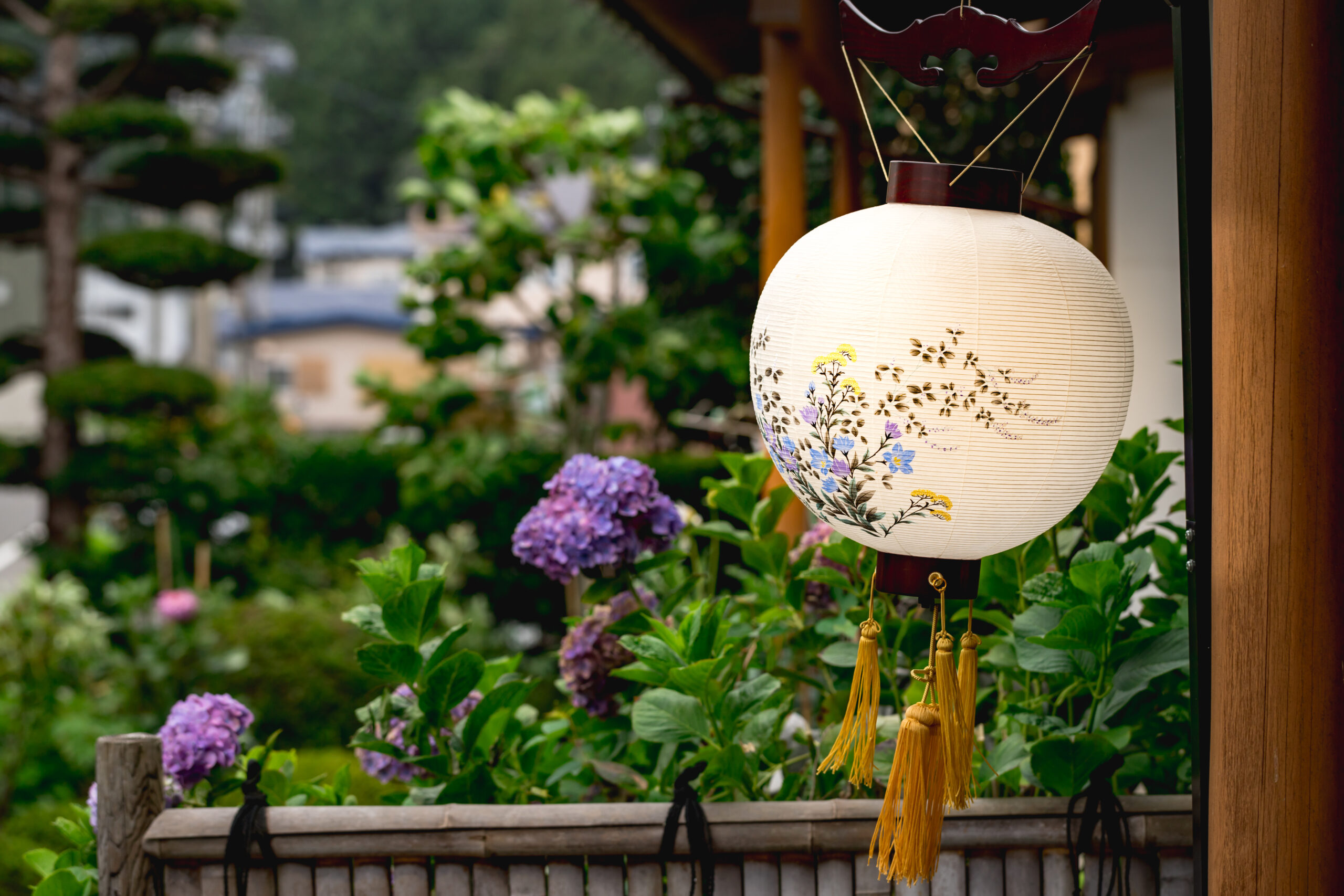
“I’m planning to visit Japan this summer and want to understand the cultural significance of its holidays and customs, especially during the Obon season.” Many people share this curiosity. To truly appreciate Japanese summer traditions, it’s essential to understand the customs and rituals that define this season, particularly those surrounding the Obon Festival.
In this article, we will explore five traditional customs that characterize Japanese summer holidays, offering insights into their meanings and how they are observed across the country.
Japanese Summer Holidays: An Overview
Significance of Summer Holidays in Japan
Cultural Importance
In Japan, summer holidays are more than just a break from work or school; they are deeply rooted in cultural and spiritual practices. These holidays provide an opportunity for families to come together, honor their ancestors, and participate in traditional customs that have been passed down through generations. The summer season is marked by a series of events and rituals that reflect the Japanese people’s respect for nature, community, and heritage.
Common Practices
During these holidays like Obon (お盆) Festival, it’s common for people to return to their hometowns, visit family graves, and partake in local festivals. Traditional foods are prepared and shared, and various ceremonies are held to pay homage to ancestors and deities. These practices not only strengthen familial bonds but also reinforce a sense of community and continuity within Japanese society.
Major Summer Holidays
Marine Day (海の日, Umi no Hi)
Marine Day is a national holiday celebrated on the third Monday of July. It was established to express gratitude for the blessings of the ocean and to acknowledge the importance of maritime activities to Japan as an island nation. On this day, various events are held across the country, including beach clean-ups, maritime exhibitions, and water sports competitions.
Mountain Day (山の日, Yama no Hi)
Mountain Day is a national holiday observed on August 11. Introduced in 2016, its purpose is to provide people with opportunities to become familiar with mountains and appreciate their blessings. Considering Japan’s mountainous regions and the cultural significance of mountains, this holiday encourages outdoor activities such as hiking and nature appreciation.
Obon Festival (お盆, Obon)
The Obon Festival is a Buddhist event held in mid-August to honor the spirits of deceased ancestors. It’s believed that during Obon, the spirits return to the world of the living to visit their families. People welcome them by cleaning graves, offering food, and lighting lanterns. The festival concludes with rituals like Bon Odori (盆踊り, Bon Odori) dances and Tōrō Nagashi (灯籠流し, floating lanterns) to send the spirits back to the afterlife. Although Obon is not an official national holiday, many businesses and schools close during this period, making it a significant summer holiday in practice.
Obon Festival: Honoring Ancestors
Origins and Historical Background
Buddhist Roots
The Obon Festival (お盆) is a deeply rooted Buddhist tradition in Japan, observed to honor and remember deceased ancestors. It is believed that during Obon, the spirits of ancestors return to the world of the living to visit their relatives. This belief is derived from the Buddhist Ullambana Sutra, which tells the story of a disciple who sought to alleviate his mother’s suffering in the afterlife by making offerings to monks. This act of compassion laid the foundation for the Obon customs practiced today.
Evolution Over Time
Initially, Obon was a solemn religious observance. Over the centuries, it has evolved into a family-oriented event that combines spiritual rituals with festive activities. While maintaining its core purpose of honoring ancestors, modern Obon celebrations often include community gatherings, dances, and festivals, reflecting the integration of traditional beliefs with contemporary cultural expressions.
Customs and Rituals
Visiting Graves
A central practice during Obon is visiting ancestral graves (お墓参り, ohaka mairi). Families clean the grave sites, offer flowers, incense, and food, and pray for the spirits of their ancestors. This act symbolizes respect and remembrance, reinforcing familial bonds across generations.
Bon Odori Dances
Bon Odori (盆踊り) are traditional dances performed during Obon to welcome and entertain the spirits of the ancestors. Participants, often dressed in yukata (浴衣), dance in a circle around a raised platform called a yagura (櫓), accompanied by taiko drums and folk songs. The dances vary by region, each with its unique style and music, reflecting local culture and history.
Tōrō Nagashi (Floating Lanterns)
On the final evening of Obon, communities participate in Tōrō Nagashi (灯籠流し), the floating of paper lanterns down rivers. These lanterns guide the spirits back to the afterlife, creating a serene and reflective atmosphere. The gentle glow of the lanterns on the water serves as a poignant farewell to the visiting souls.

Regional Variations
Differences Across Japan
Obon is celebrated throughout Japan, but the timing and customs can vary by region. For example, in Tokyo and other eastern areas, Obon is observed in mid-July, while in most other regions, it takes place in mid-August. These differences are due to historical calendar changes and local traditions.
Unique Local Practices
Certain regions have distinctive Obon customs. In Tokushima, the Awa Odori (阿波踊り) is a lively dance festival attracting numerous participants and spectators. In Kyoto, the Gozan no Okuribi (五山送り火) involves lighting large bonfires on mountainsides to send off the spirits. These regional practices highlight the diversity and richness of Obon celebrations across Japan.
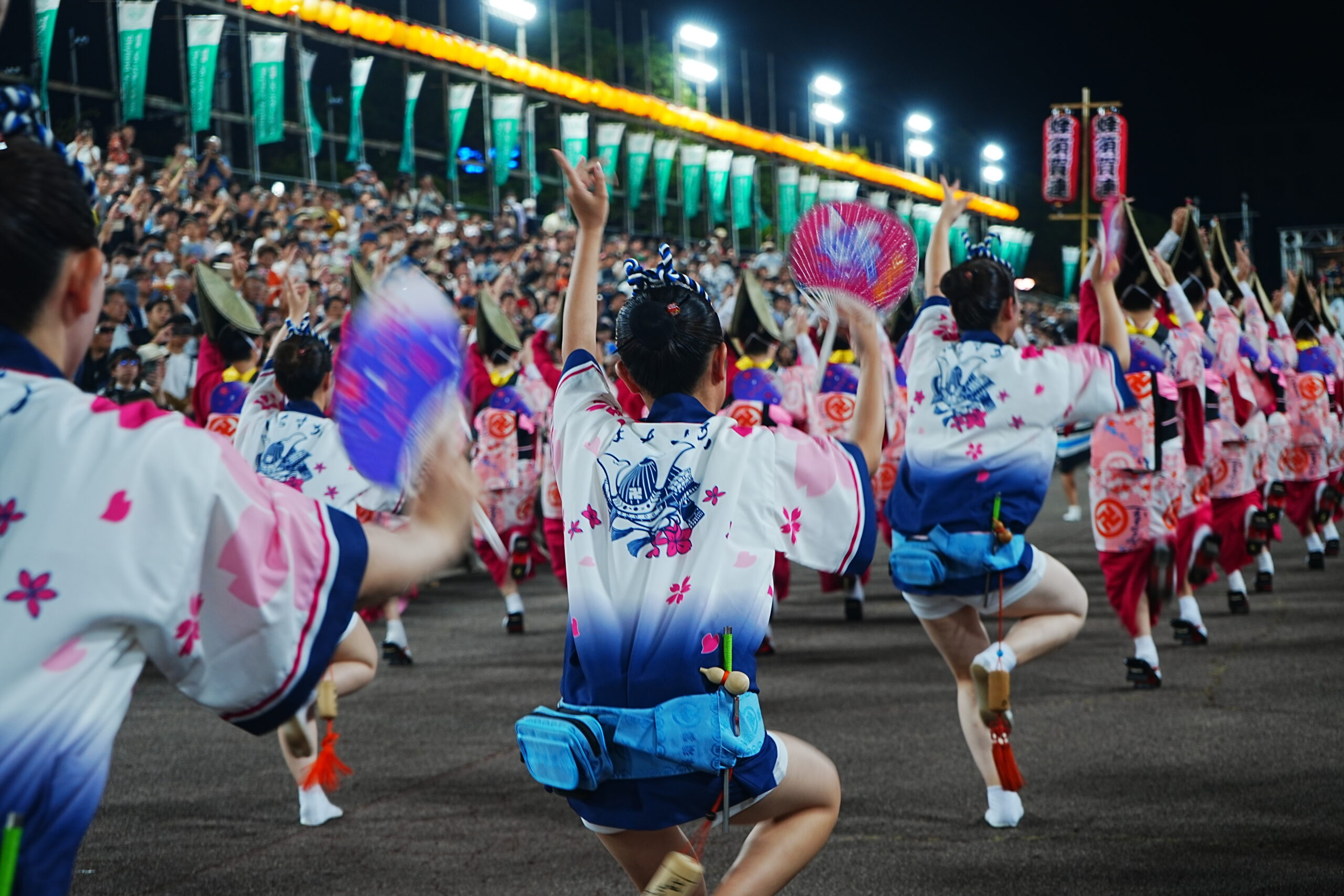
Here Are More Articles You Might Find Helpful:
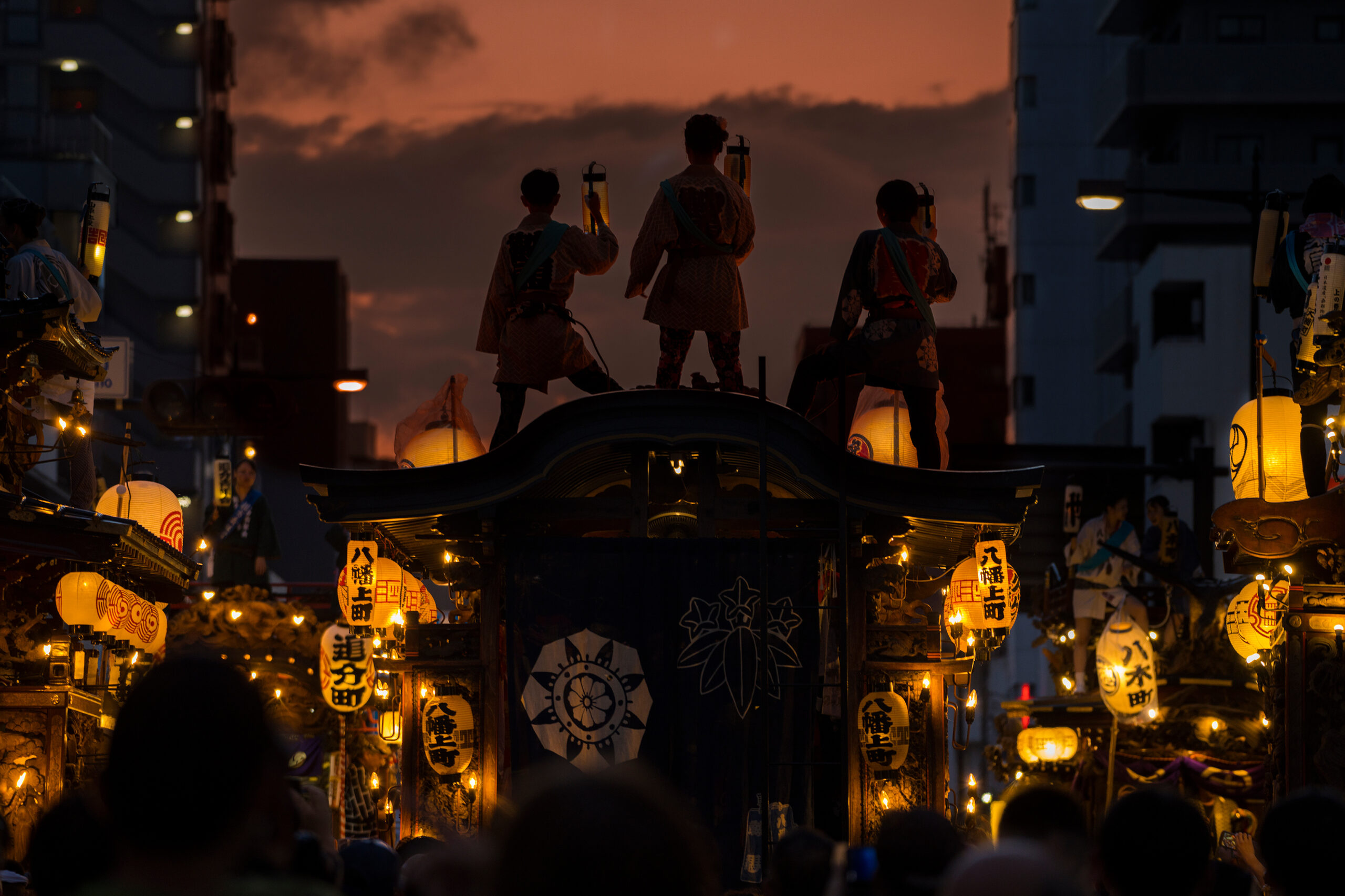

Midsummer Day of the Ox (土用の丑の日, Doyō no Ushi no Hi): A Tradition of Eating Unagi
Historical Significance
Origins of the Custom
The tradition of consuming unagi (うなぎ), or freshwater eel, during the Midsummer Day of the Ox (土用の丑の日, Doyō no Ushi no Hi) traces back to the Edo period (1603–1868). During this era, it was believed that eating foods beginning with the syllable “u” could help combat the summer heat. This belief, combined with the nutritional value of unagi, led to its popularity during this period. A notable figure, Hiraga Gennai, a renowned scholar and inventor, is often credited with promoting this custom. He advised an eel shop owner to advertise unagi consumption on the Day of the Ox, leveraging the wordplay between “unagi” and “ushi” (ox), which significantly boosted sales and established the tradition.
Connection to Seasonal Changes
In the traditional Japanese calendar, Doyō (土用) refers to the approximately 18-day period preceding the start of each season. The Day of the Ox (丑の日, Ushi no Hi) is determined based on the Chinese zodiac, which assigns an animal to each day in a 12-day cycle. Therefore, during the Doyō period, there can be one or two Days of the Ox. The summer Doyō period, leading up to the beginning of autumn, is particularly significant due to the intense heat and humidity. Consuming unagi during this time is believed to provide stamina and resilience against the oppressive summer climate.
Culinary Practices
Eating Unagi (Grilled Eel)
Unagi is typically prepared as kabayaki (蒲焼き), where the eel is filleted, skewered, and grilled with a sweet soy-based sauce. This preparation is then served over rice in dishes like unadon (うな丼) or unajū (うな重), the latter being presented in a lacquered box. These dishes are not only flavorful but also rich in protein, vitamins A and E, and omega-3 fatty acids, making them both delicious and nutritious choices during the summer.
Regional Variations in Dishes
The preparation of unagi varies between regions in Japan. In the Kantō region (eastern Japan), the eel is slit along the back, grilled, steamed, and then grilled again with sauce, resulting in a tender texture. Conversely, in the Kansai region (western Japan), the eel is slit along the belly and grilled without steaming, offering a chewier texture. These regional differences reflect the diverse culinary traditions across Japan.
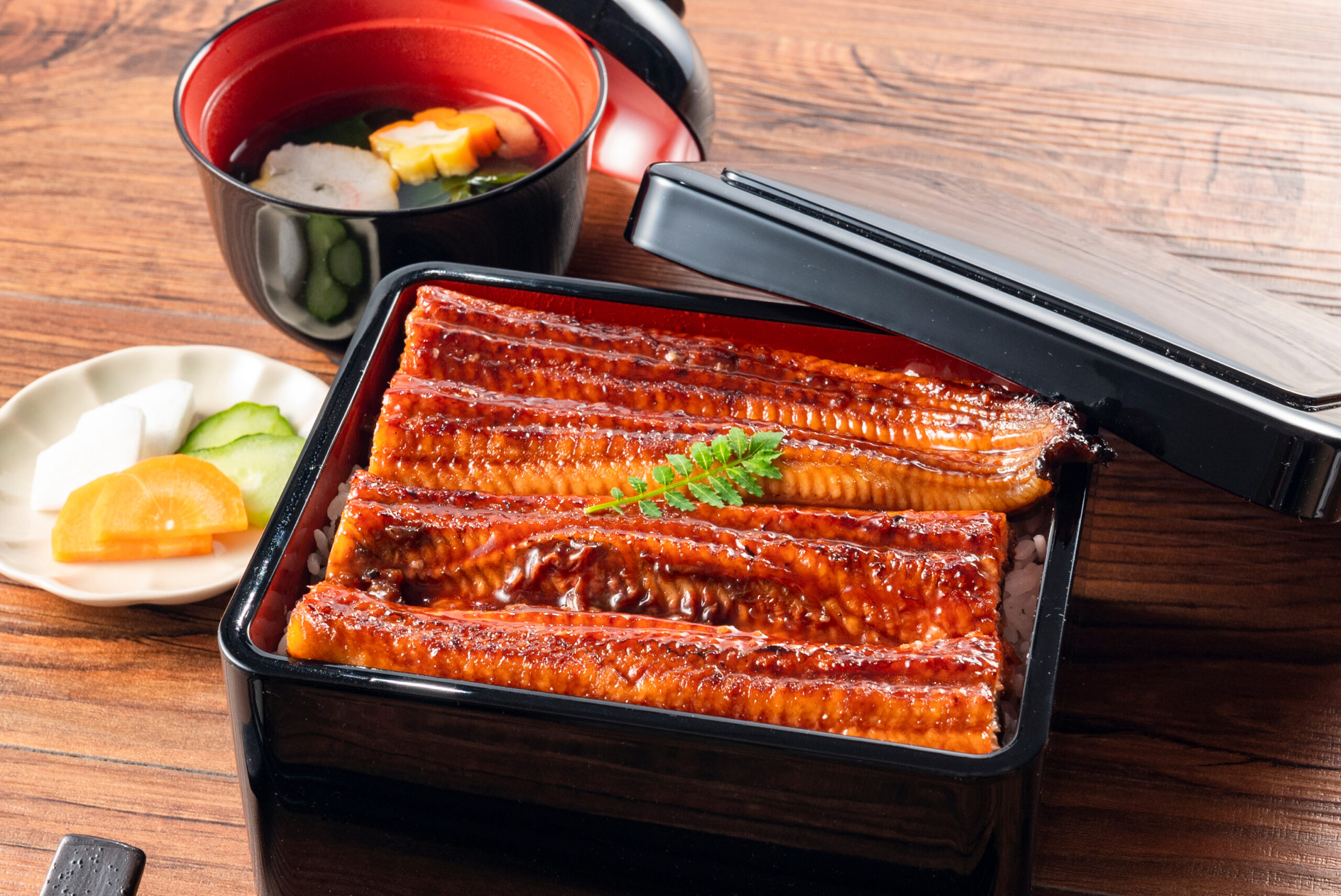
Tanabata: The Star Festival
Mythological Background
Legend of Orihime and Hikoboshi
Tanabata (七夕) is a traditional Japanese festival that celebrates the annual meeting of two celestial lovers: Orihime (織姫), the weaving princess represented by the star Vega, and Hikoboshi (彦星), the cowherd represented by the star Altair. According to legend, these lovers are separated by the Milky Way (天の川, Amanogawa) and are allowed to meet only once a year on the seventh day of the seventh lunar month. This romantic tale, originating from Chinese folklore, was introduced to Japan in the 8th century and has since become an integral part of Japanese culture.
Cultural Significance
The story of Orihime and Hikoboshi symbolizes the importance of balancing personal desires with responsibilities. Their tale serves as a reminder that love and duty must coexist harmoniously, and neglecting one’s responsibilities can lead to consequences. Over time, Tanabata has evolved into a festival that not only honors this celestial reunion but also encourages people to reflect on their aspirations and dreams.
Celebratory Customs
Writing Wishes on Tanzaku
A central tradition of Tanabata involves writing wishes on colorful strips of paper called tanzaku (短冊). People inscribe their hopes and dreams onto these papers and hang them on bamboo branches, believing that their wishes will be carried up to the heavens. This practice is deeply rooted in the festival’s theme of hope and the human desire for connection and fulfillment.
Decorating Bamboo Branches
The decorated bamboo branches, adorned with tanzaku and other ornaments, are often displayed in homes, schools, and public spaces. These decorations add a festive atmosphere to the surroundings and are sometimes set afloat on rivers or burned after the festival, symbolizing the sending off of wishes.
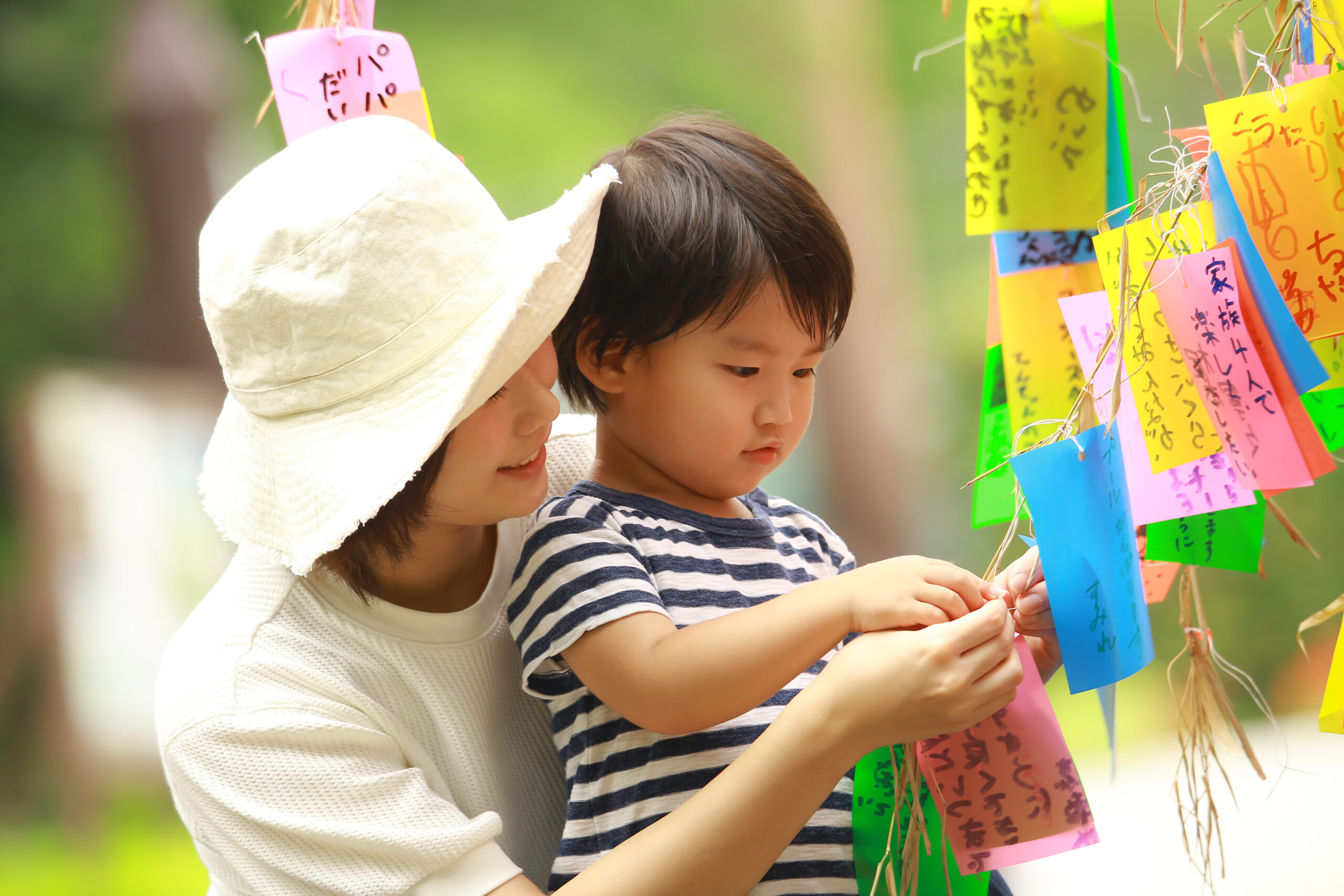
Notable Festivals
Sendai Tanabata Festival
The Sendai Tanabata Festival (仙台七夕まつり, Sendai Tanabata Matsuri) is one of the most renowned Tanabata celebrations in Japan. Held annually from August 6 to 8 in Sendai City, Miyagi Prefecture, the festival features vibrant decorations, including thousands of colorful streamers and intricate paper crafts that adorn the city’s shopping arcades.
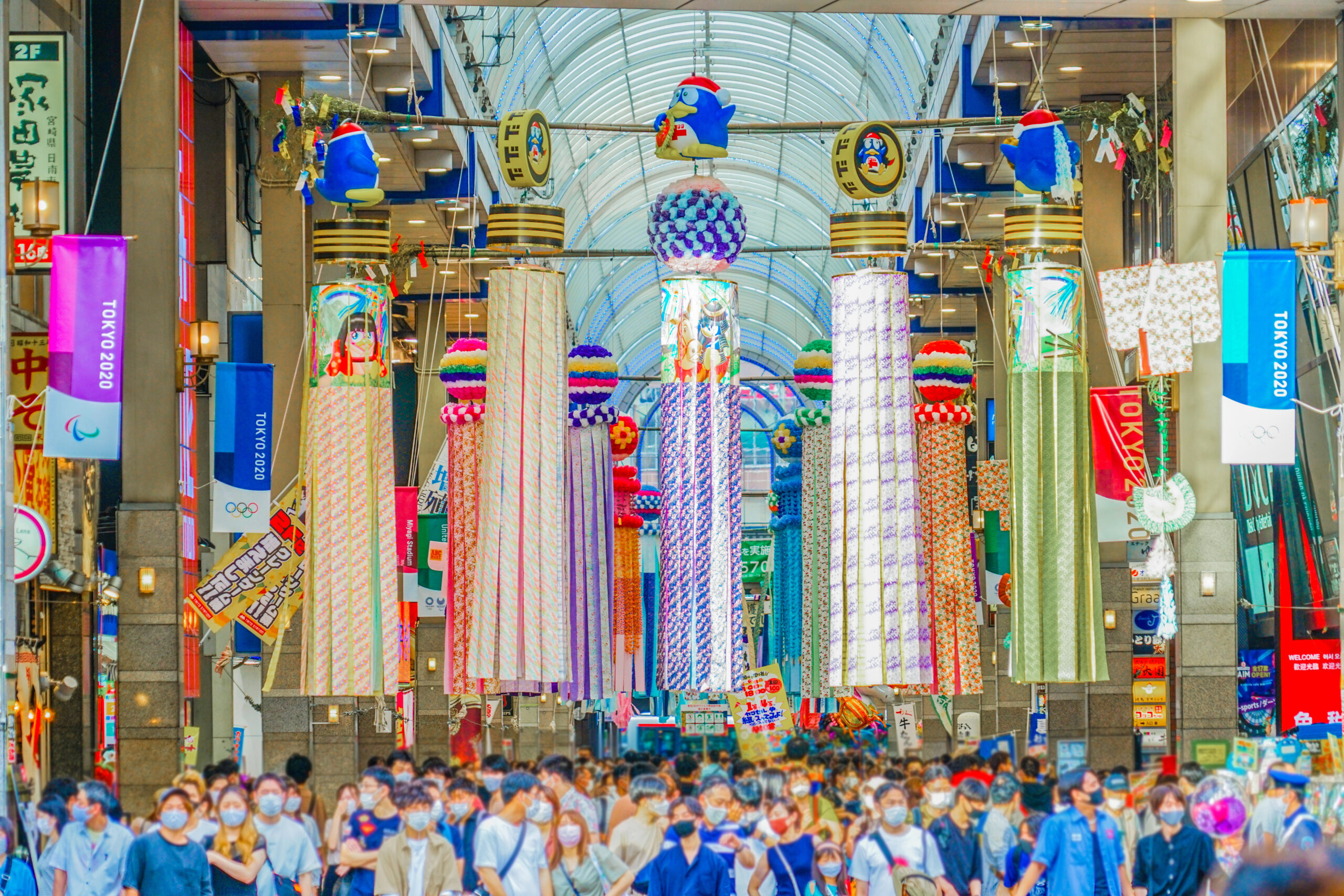
Hiratsuka Tanabata Festival
Another prominent celebration is the Hiratsuka Tanabata Festival (湘南ひらつか七夕まつり, Shōnan Hiratsuka Tanabata Matsuri), which takes place in early July in Hiratsuka City, Kanagawa Prefecture. This festival is known for its massive bamboo decorations and lively atmosphere, attracting numerous visitors each year.
Gozan no Okuribi: The Grand Send-off Fires
Overview of the Event
Purpose and Meaning
Gozan no Okuribi (五山の送り火) is a traditional event held annually on August 16 in Kyoto. It marks the climax of the Obon (お盆) festival, a period when ancestral spirits are believed to return to the world of the living. The event involves lighting five giant bonfires on mountains surrounding the city to send off the spirits back to the afterlife. This practice symbolizes the community’s respect and remembrance for their ancestors.
Historical Context
The origins of Gozan no Okuribi are not precisely documented, but it is believed to have become an annual event during the Muromachi (1336–1573) and Edo (1603–1868) periods. Specific families have hereditary responsibilities for organizing and maintaining the bonfires, dedicating significant time each year to uphold this tradition.

The Five Giant Bonfires
Locations and Shapes
The five bonfires, each with distinct shapes and meanings, are lit sequentially starting at 8:00 PM:
- Daimonji (大文字): The character for “large” or “great,” lit on Daimonji-yama (Nyoigatake).
- Myō/Hō (妙・法): Characters meaning “wondrous dharma,” representing Buddhist teachings, lit on Matsugasaki, Nishi-Yama/Higashi-Yama.
- Funagata (舟形): Shaped like a boat, symbolizing the vessel that carries spirits, lit on Nishigamo, Funa-Yama.
- Hidari Daimonji (左大文字): Another “large” character, lit on Daihoku-San, Hidaridaimonji-San.
- Toriigata (鳥居形): Shaped like a shrine gate, representing the entrance to the spiritual world, lit on Toriimoto, Mandara-San.
Viewing Spots in Kyoto
For those wishing to witness Gozan no Okuribi, several locations in Kyoto offer excellent views:
- Kamogawa Riverbanks: Between Marutamachi and Misono bridges, ideal for viewing Daimonji.
- Kitayama Street: Near Notre Dame Elementary School or the banks of the Takano River around the north side of Takano Bridge, suitable for Myō/Hō.
- Kitayama Street (Northwest of Kitayama Ohashi Bridge): Offers views of Funagata.
- Nishioji Street: Between Shijo and the Kinkakuji area, for Hidari Daimonji.
- Around Matsuo Bridge or Near Hirosawa Pond: Best for viewing Toriigata.
These spots provide residents and visitors with the opportunity to partake in this solemn and visually striking tradition that honors ancestral spirits.
For comprehensive and official information on Gozan no Okuribi, the following websites are highly recommended:
- Kyoto City Official Travel Guide: This site provides detailed insights into the history, significance, and viewing tips for the Gozan no Okuribi bonfires.
- Gozan Okuribi Rengoukai Official Site: Offering in-depth historical context and cultural background, this site is managed by the association responsible for organizing the event.
- Japan National Tourism Organization (JNTO): As the official tourism body of Japan, JNTO provides an overview of the event, including its cultural importance and practical information for visitors.
These resources offer reliable and up-to-date information to enhance your understanding and experience of this iconic Kyoto tradition.
You Might Also Be Interested In:


Summer Foods: Seasonal Delights
Traditional Dishes
Sōmen (そうめん) Noodles
Sōmen noodles are ultra-thin wheat noodles, typically less than 1.7mm in diameter. During the summer, they are boiled, cooled in ice water, and served with a chilled dipping sauce called mentsuyu (めんつゆ), which is a blend of soy sauce, mirin, and dashi. This light and refreshing dish is a staple in Japanese households during the hot months.
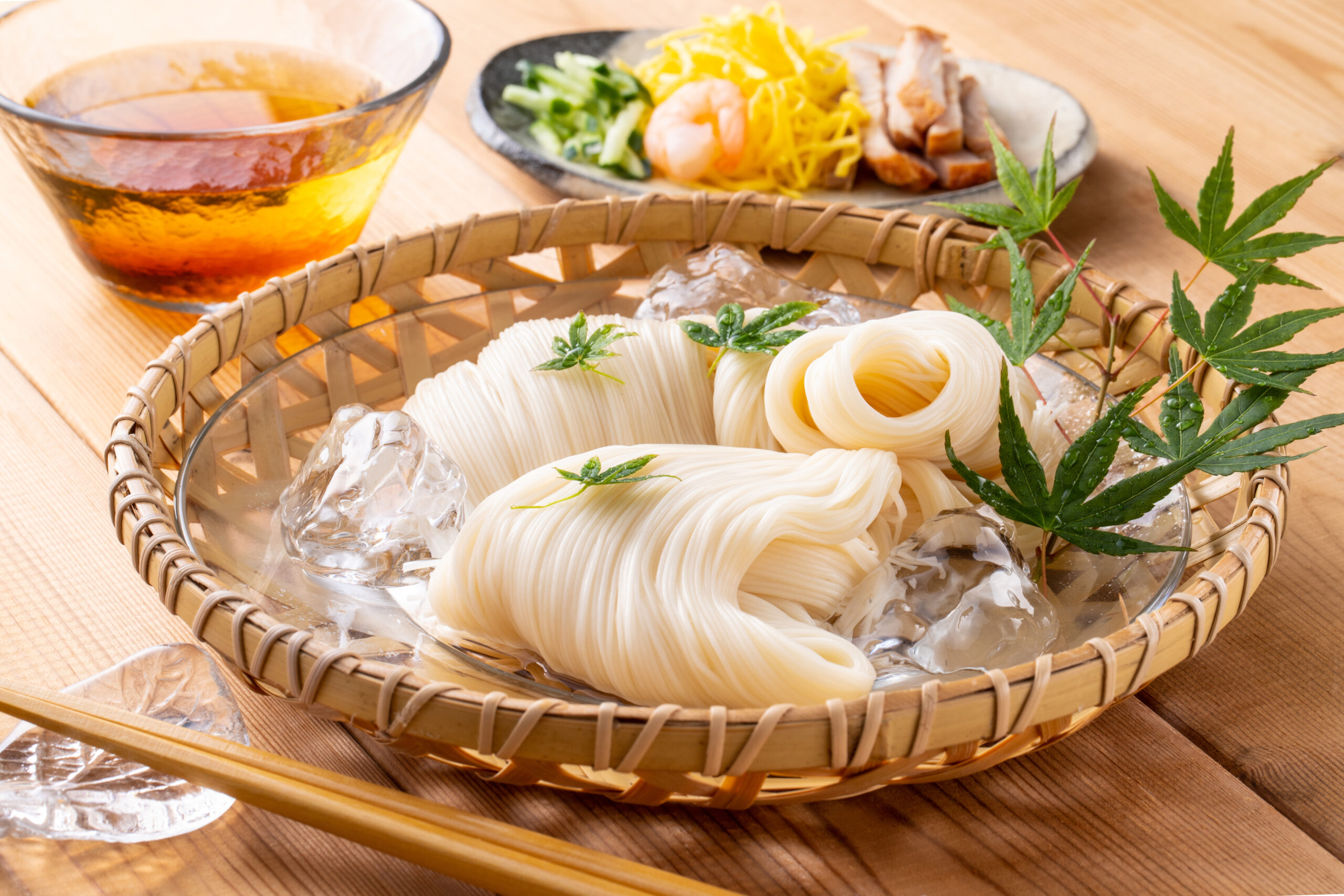
Hiyashi Chūka (冷やし中華)
Hiyashi Chūka is a cold ramen dish that originated in Japan, despite its name meaning “chilled Chinese food.” It consists of chilled ramen noodles topped with various ingredients such as sliced cucumber, tomato, ham, egg strips, and sometimes pickled ginger. The dish is typically served with a tangy soy-based sauce or a sesame-based dressing.
Zaru Soba (ざるそば)
Zaru Soba features cold buckwheat noodles served on a bamboo tray called a zaru. The noodles are accompanied by a dipping sauce made from dashi, soy sauce, and mirin. Often garnished with nori (seaweed) and served with condiments like wasabi and chopped green onions, this dish offers a nutty flavor and a refreshing taste, making it ideal for summer.
Seasonal Fruits and Desserts
Watermelon (スイカ, Suika)
Watermelon is a quintessential summer fruit in Japan, celebrated not just for its refreshing taste but also for its role in traditional summer activities. One such activity is suikawari (スイカ割り), a game where a blindfolded participant attempts to split a watermelon with a stick, guided by the shouts of friends. This game is most commonly played on beaches, at summer festivals, and during outdoor gatherings, providing both entertainment and a delicious treat once the watermelon is successfully split.

Kakigōri (かき氷)
Kakigōri is a traditional Japanese shaved ice dessert, dating back to the Heian period. It’s made by shaving blocks of ice into a fine, fluffy texture and topping them with flavored syrups like strawberry, melon, or green tea. Often, condensed milk is added for extra sweetness. Kakigori is a popular treat at summer festivals and is also available in cafes and convenience stores.
Umeshu (梅酒)
Umeshu is a sweet and fruity liqueur made by steeping unripe Japanese plums (梅, ume) in alcohol and sugar. It has a distinct sweet and sour flavor and is typically enjoyed chilled or over ice during the summer months. Umeshu can also be used in cocktails or as a base for other beverages.
Conclusion: Embracing Japanese Summer Traditions
Reflecting on the Season
Importance of Traditions
Japanese summer traditions are deeply rooted in cultural and historical practices that have been passed down through generations. Events like Obon (お盆) and Tanabata (七夕) not only offer moments of reflection and remembrance but also foster community bonding and a sense of continuity with the past. These traditions provide opportunities to honor ancestors, celebrate seasonal changes, and take part in communal festivals that enrich Japanese culture.
Encouragement to Participate
For those visiting Japan during the summer months, participating in these cultural events offers a unique insight into the country’s rich heritage. Engaging in activities such as writing wishes on tanzaku (短冊) during Tanabata, attending Bon Odori (盆踊り) dances, or savoring seasonal delicacies like unagi (うなぎ) on Doyō no Ushi no Hi (土用の丑の日) can provide memorable experiences that deepen one’s appreciation for Japanese culture.
Frequently Asked Questions
What is the significance of Obon in Japanese culture?
Obon (お盆) is a traditional Buddhist event held in mid-August to honor the spirits of deceased ancestors. It’s believed that during Obon, the spirits return to the world of the living to visit their families. People welcome them by cleaning graves, offering food, and lighting lanterns. The festival concludes with rituals like Bon Odori (盆踊り) dances and Tōrō Nagashi (灯籠流し, floating lanterns) to send the spirits back to the afterlife.
When is Doyō no Ushi no Hi celebrated?
Doyō no Ushi no Hi (土用の丑の日) refers to the “Midsummer Day of the Ox,” which typically falls in late July. In 2025, it is observed on July 19th and July 31st. On this day, it’s customary to eat unagi (うなぎ, grilled eel) to gain stamina and vitality during the hot summer months.
How do people celebrate Tanabata?
Tanabata (七夕), also known as the Star Festival, is celebrated on July 7th. People write their wishes on colorful strips of paper called tanzaku (短冊) and hang them on bamboo branches. These decorations are often displayed in homes, schools, and public spaces. Festivals featuring traditional music, dance, and parades are also held in various regions.
What are the five bonfires of Gozan no Okuribi?
Gozan no Okuribi (五山送り火) is a traditional event held in Kyoto on August 16th, marking the end of the Obon festival. Five giant bonfires are lit on mountains surrounding the city, each in the shape of a character or symbol: “Daimonji” (大), “Myo/Hou” (妙・法), “Funagata” (舟形), “Hidari Daimonji” (左大文字), and “Toriigata” (鳥居形). These fires are meant to guide the spirits of ancestors back to the spirit world.
What are some popular summer foods in Japan?
Popular summer foods in Japan include:
- Sōmen (そうめん): Thin wheat noodles served cold with a dipping sauce.
- Hiyashi Chūka (冷やし中華): Chilled ramen noodles topped with various ingredients.Reddit
- Zaru Soba (ざるそば): Cold buckwheat noodles served on a bamboo tray with dipping sauce.
- Suika (スイカ): Watermelon, often enjoyed during summer gatherings.
- Kakigōri (かき氷): Shaved ice dessert flavored with syrups.
- Umeshu (梅酒): Sweet plum wine, typically served chilled.
These dishes and treats highlight the importance of seasonal ingredients in Japanese cuisine, offering both refreshing flavors and cultural significance during the summer months.
